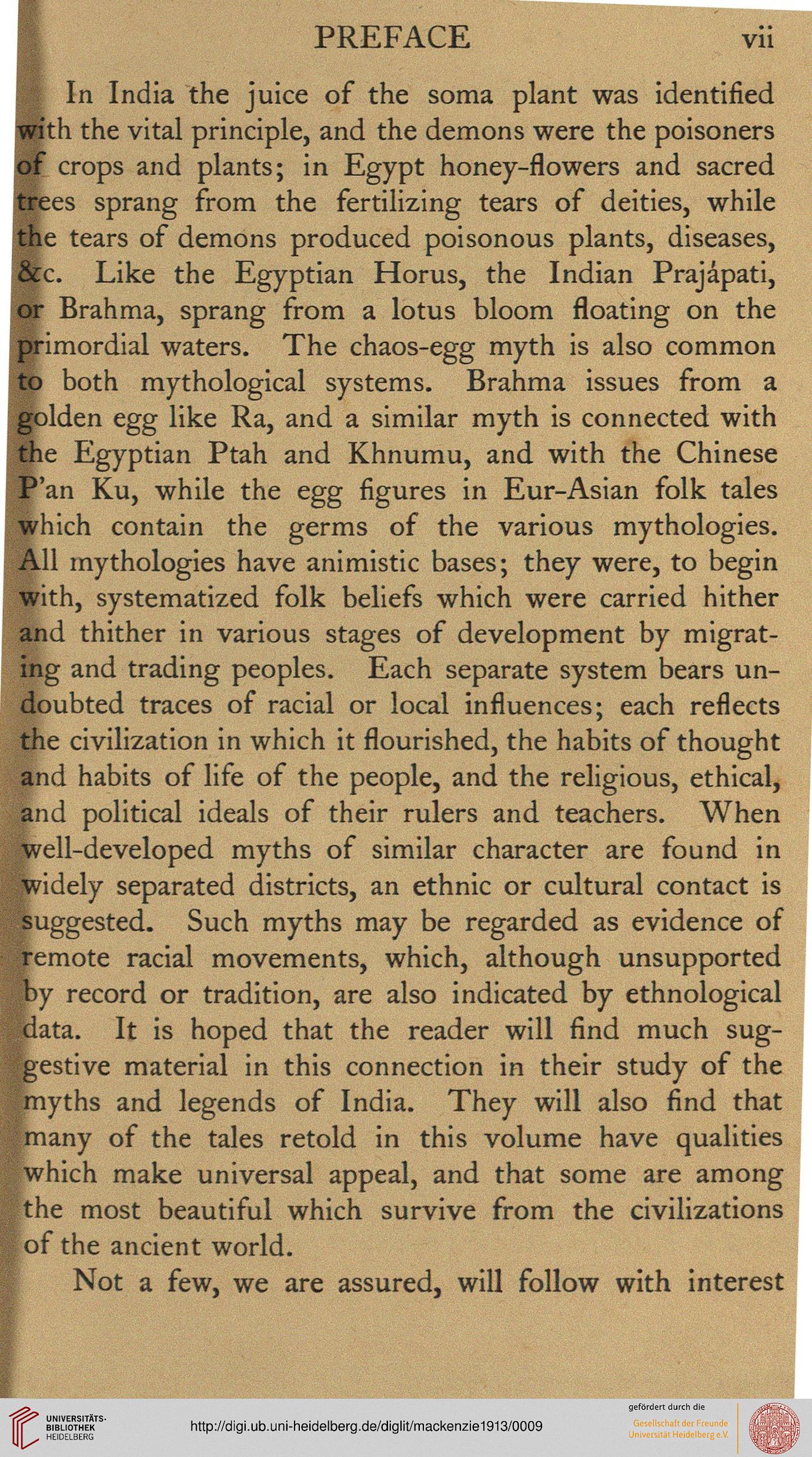PREFACE
vn
In India the juice of the soma plant was identified
the vital principle, and the demons were the poisoners
crops and plants; in Egypt honey-flowers and sacred
:es sprang from the fertilizing tears of deities, while
the tears of demons produced poisonous plants, diseases,
Be. Like the Egyptian Horus, the Indian Prajapati,
or Brahma, sprang from a lotus bloom floating on the
primordial waters. The chaos-egg myth is also common
It) both mythological systems. Brahma issues from a
golden egg like Ra, and a similar myth is connected with
the Egyptian Ptah and Khnumu, and with the Chinese
P'an Ku, while the egg figures in Eur-Asian folk tales
which contain the germs of the various mythologies.
All mythologies have animistic bases; they were, to begin
with, systematized folk beliefs which were carried hither
and thither in various stages of development by migrat-
ing and trading peoples. Each separate system bears un-
doubted traces of racial or local influences; each reflects
the civilization in which it flourished, the habits of thought
and habits of life of the people, and the religious, ethical,
and political ideals of their rulers and teachers. When
well-developed myths of similar character are found in
widely separated districts, an ethnic or cultural contact is
suggested. Such myths may be regarded as evidence of
jremote racial movements, which, although unsupported
jiby record or tradition, are also indicated by ethnological
data. It is hoped that the reader will find much sug-
gestive material in this connection in their study of the
myths and legends of India. They will also find that
c'many of the tales retold in this volume have qualities
f; which make universal appeal, and that some are among
I the most beautiful which survive from the civilizations
I of the ancient world.
Not a few, we are assured, will follow with interest
vn
In India the juice of the soma plant was identified
the vital principle, and the demons were the poisoners
crops and plants; in Egypt honey-flowers and sacred
:es sprang from the fertilizing tears of deities, while
the tears of demons produced poisonous plants, diseases,
Be. Like the Egyptian Horus, the Indian Prajapati,
or Brahma, sprang from a lotus bloom floating on the
primordial waters. The chaos-egg myth is also common
It) both mythological systems. Brahma issues from a
golden egg like Ra, and a similar myth is connected with
the Egyptian Ptah and Khnumu, and with the Chinese
P'an Ku, while the egg figures in Eur-Asian folk tales
which contain the germs of the various mythologies.
All mythologies have animistic bases; they were, to begin
with, systematized folk beliefs which were carried hither
and thither in various stages of development by migrat-
ing and trading peoples. Each separate system bears un-
doubted traces of racial or local influences; each reflects
the civilization in which it flourished, the habits of thought
and habits of life of the people, and the religious, ethical,
and political ideals of their rulers and teachers. When
well-developed myths of similar character are found in
widely separated districts, an ethnic or cultural contact is
suggested. Such myths may be regarded as evidence of
jremote racial movements, which, although unsupported
jiby record or tradition, are also indicated by ethnological
data. It is hoped that the reader will find much sug-
gestive material in this connection in their study of the
myths and legends of India. They will also find that
c'many of the tales retold in this volume have qualities
f; which make universal appeal, and that some are among
I the most beautiful which survive from the civilizations
I of the ancient world.
Not a few, we are assured, will follow with interest




